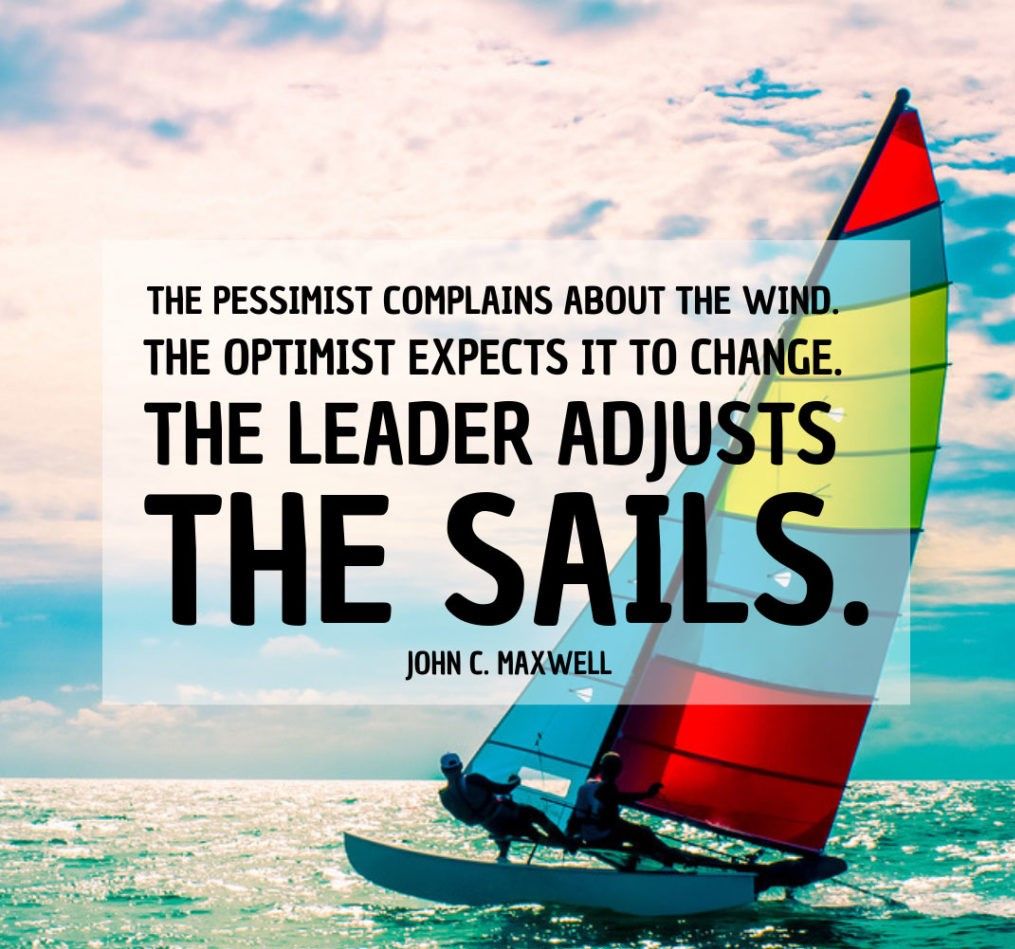
How to Be an Effective Nonprofit Leader
Cathleen L. Armstead, Ph.D.
Effective Leaders: Passions and Purpose
In the world of nonprofit organizations where passion and purpose combine to make meaningful impacts, effective leadership stands at the heart of every success story. Nonprofit leaders face unique challenges that demand not only a robust commitment to their mission but also a profound understanding of how to galvanize and manage teams toward achieving unparalleled success. This blog explores three key leadership skills for nonprofit leaders that can foster an environment of growth, collaboration, and positive impact. Targeted leadership training can enhance these leadership skills and make a profound difference in any nonprofit organization and the fabric of our communities. Want to learn about professional development opportunities for nonprofit organization leaders? Continue reading.

A Changing World Needs Changing Leaders
The impact of COVID-19 exposed and amplified systemic inequities and structural racism, perpetuating disparities among vulnerable populations. The needs of our most vulnerable populations include increasing economic inequalities, disparate mental wellness challenges, expanding social isolation, and a politically polarized citizenry. Recognizing and addressing these shifting requirements is an opportunity for nonprofit leaders to reaffirm a commitment to equity, support, and compassion. Nonprofit professionals will need to foster a culture of collaboration and innovation to develop solutions that not only meet the immediate needs of these groups but also empower them toward sustainable growth and self-reliance. This starts with leadership development through a nonprofit leadership program.
3 Core Practices for Leaders
More than ever, nonprofit professionals need exceptional skills. Leadership skills are not personal characteristics or talents. Furthermore, there is no ideal “type” of nonprofit leadership. Instead, leadership is a set of skills that can be systematically learned, practiced, and refined, like any other set of skills.
There are three core practices required for leadership of nonprofit organizations in today’s changing world:
- Growth mindset.
- Radical candor.
- Commitment to continuous improvement is measured through outcomes data.

Growth Mindset
A growth mindset is “the understanding that abilities and understanding can be developed” (Mindset Works, n.d.). Those with a growth mindset believe that they can get smarter, more intelligent, and more talented by putting in time and effort. A fixed mindset assumes abilities and understanding are relatively fixed. Those with a fixed mindset may believe that intelligence, abilities, and talents are innate, or relatively fixed. The main difference between the two mindsets is the belief in the permanence of intelligence and ability. Most of us are a mixture of the two mindsets and exhibit a different thought process within different contexts.
In this context, a growth mindset believes that leadership skills, from inspiring others to skillful presentation and sophisticated use of data are changeable and present opportunities for improvement. Importantly, cultivating a growth mindset among your team/staff begins with cultivating a growth mindset in your own life.
According to Carol Dweck, a growth mindset is not simply being open-minded, willing to learn, or willing to work harder. A growth mindset also focuses on outcomes. Unproductive effort should not be rewarded. Learning with progress should be met with praise, but improvement without impact needs to be redirected. As Dweck argues, “Growth mindset needs to be backed up with effort applied to worthwhile activities, and even then, success is not inevitable.”

Developing Your Own Growth Mindset
Developing a growth mindset as a leader and for your followers begins with creating a new compelling belief: a belief in yourself, your skills, abilities, and your capacity for positive change. It requires self-awareness and feedback from those who know you, including both supervisors and direct reports. An important aspect of developing a growth mindset is to “do what you love and love what you do.” Success requires both effort and resilience, acknowledging learning opportunities (often called mistakes), and learning from them.
Reflecting on learning opportunities (NOT mistakes) takes the form of asking and answering the following questions.
- What happened when you made the mistake?
- How did you realize you had the wrong answer?
- Describe how you started thinking about the problem.
- How did it feel when you realized you made a mistake?
- What did you learn from making this mistake?
Communication: Radical Candor
Communication: Radical Candor
A second key factor in improving employee performance and enhancing services to clients begins with open and honest communication, what Kim Scott calls Radical Candor. Scott argues that the core of honest communication is a deep relationship of trust.
Creating relationships begins with strengthening your own relationship with yourself. Staying centered at work and devoting time to your own physical and mental health is crucial for developing a caring personality. The next step is allowing others to be comfortable at work, relinquishing traditional modes of control. Granting autonomy to employees is an important aspect of deep trust.
Challenge Directly
The second dimension of deep trust is challenging directly; it is about being open enough to tell people when they are doing something wrong. This also works in the opposite direction: Leaders need to be able to hear things that may be upsetting. It may not be pleasant, but it’s important to know how you are perceived.
Criticism is encouraged with the aim of uncovering errors, biases, blot spots, and mistakes, and to correct. Praise is encouraged, but it needs to be contextualized and specific. Praise is not vague and is different from flatter. With a team of caring personalities who are willing to challenge mistakes, a culture of deep trust emerges that forms the bedrock of effective teamwork. An important aspect of this process is humility. Humility lessens the discomfort of errors and mistakes and provides a space for more honest praise.
Both praise and criticism need to be specific and immediate. It’s hard to be specific with praise, it’s also hard to be immediate with criticism. The tendency to delay critiques diminishes learning from mistakes.

Continuous Improvement with Data
The third essential practice for effective leadership is a commitment to a culture of continuous improvement. Such a commitment requires a growth mindset that looks for challenges and opportunities to grow. It also relies on radical candor and the necessity for honest feedback for improvement. Most importantly, a commitment to continuous improvement focuses on data, primarily on outcomes and impact data.
Data for continuous improvement is not simply about measuring and reporting. Nonprofit organizations typically begin their data collection to focus on the demographics and needs (statistically described) of the community. Then nonprofits typically turn their data collection to counting how many services were provided, and how many clients participated in these services. Nonprofit organizations may also count how many people requested information or visited their website.
This is valuable data, but only provides a basic look at the needs and services provided and is not the type of data that will allow a nonprofit to provide effective services in our changing and challenging environment.
Measuring outcomes is harder, as is measuring impact data. What happens to the client will be a result of multiple factors: efforts by the organization or client and external factors. It may not be perfect data, but good data can still lead to valuable insights. Nonprofit organizations need to examine if information and referrals were used, and then if that information or those referrals were positive.
Choosing a Leadership Training Program
Developing effective leadership skills is crucial, especially for nonprofit leaders tasked with making impactful decisions while optimizing resources. When selecting a targeted leadership training course, there are specific elements to consider ensuring the program aligns with your needs and objectives.
Objectives of the Leadership Training Course
Develop a Growth Mindset
A key aim of any leadership training should be fostering a growth mindset. This involves:
● Encouraging Continuous Learning: Resource development should promote the idea that abilities and intelligence can develop with effort, learning, and perseverance.
● Overcoming Challenges: Training should include strategies for dealing with setbacks and failures positively, turning them into learning opportunities.
Improve Communication with Radical Candor
Radical candor is about being direct while maintaining empathy and respect. Look for courses that:
● Teach Clear Communication: Effective modules will cover how to deliver feedback directly and assertively without being insensitive.
● Enhance Empathetic Listening: Programs should include techniques for understanding and addressing team members' concerns and emotions.
Use Data Effectively
Nonprofit leaders need to make data-driven decisions. Training should include:
● Data Interpretation: Learning to analyze and interpret outcomes data accurately to guide strategic planning.
● Measuring ROI: Understanding how to assess the return on investment (ROI) for various initiatives like fundraising and board member training to ensure resources are used effectively.
Focus on Skills
Understanding Outcomes Data and Return on Investment (ROI)
To make informed decisions, nonprofit leaders must be adept at interpreting data and measuring success. Therefore, the training course should focus on:
● Quantitative Analysis: Providing tools and methods to analyze numerical data relevant to nonprofit goals.
● Impact Assessment: Teaching how to evaluate the effectiveness of programs and initiatives, determining their success and areas for improvement.
Target Audience
Nonprofit Leaders
The training should be tailored specifically for those in the nonprofit sector by:
● Addressing Sector-Specific Challenges: Courses should reflect the unique challenges faced by nonprofit leaders, such as limited resources and the need for transparency.
● Providing Relevant Case Studies: Real-world examples from nonprofit organizations can make the content more relatable and actionable.
Choosing the Right Course
When evaluating different leadership training courses, consider the following criteria:
● Reputation and Reviews: Look for programs with positive feedback from past participants, particularly those in the nonprofit sector.
● Instructor Expertise: Ensure that the instructors have relevant experience and a proven track record in leadership and nonprofit management.
● Interactive Components: Courses that offer interactive elements, such as workshops and peer discussions, tend to provide more practical and engaging learning experiences.
● Ongoing Support: Check if the course provides resources and support even after completion, such as access to a community of peers or additional learning materials.
Conclusion
Selecting a targeted leadership training course involves understanding your specific objectives, focusing on crucial leadership skills, and ensuring the content is relevant to nonprofit leaders. By choosing a program that emphasizes a growth mindset, radical candor communication, and effective data use, you’ll be better equipped to lead your organization towards greater impact and success.
Ready to elevate your leadership skills? Start exploring targeted training programs today and take the first step towards becoming a more effective and inspiring nonprofit leader.
Spark Growth in Your Leadership Team
If your leadership team needs further training or a refresh on policies and nonprofit leadership best practices, Sunshine Nonprofit Solutions can help. We offer countless coaching and training programs and resources for your team to learn and grow from. Want to learn more?
Book a 30-minute meeting today.
